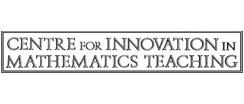- View more resources from this publisher
 Centre for Innovation in Mathematics Teaching
Centre for Innovation in Mathematics Teaching
Mathematical Misconceptions
There are many misconceptions in the understanding of mathematics which ultimately give rise to errors. Resources addressing eight of the most commonly found are included in this collection. Each resource contains an explanation of how the misconception arises so easily, together with some exercises aimed at reinforcing the correction needed. It is hoped that a study of the reason, together with practice of the exercises, will help to eliminate these errors.
Resources
Filter
Adding with negative numbers
A number line is used in this resource, from the Centre for Innovation in Mathematics Teaching, to illustrate how to solve a calculation involving negative numbers. To help correct misconceptions regarding these, the term taking away is used to represent minus and giving back for plus. Thus -8 +6...
Calculations with hundreds and thousands
This resource, from the Centre for Innovation in Mathematics Teaching, builds on students' previous knowledge of multiplying by powers of 10 to demonstrate how calculations such as 2000 x 300 can be performed accurately. Follow-up exercises provide practice in the skills learned.
Calculations with negative numbers
Straightforward logic is used in this resource, from the Centre for Innovation in Mathematics Teaching, to establish the calculation, necessary to move correctly along a number line, when the starting point is at a negative value. Phrases such as owing and debt are used to help students deal with...
Decimals and their equivalent fractions
This resource, from the Centre for Innovation in Mathematics Teaching, explores the misconception that decimals and fractions are different types of numbers. It illustrates how to write a decimal value as a fraction, as well as how, by using division, most fractions can be expressed with denominators of 10, 100 or...





